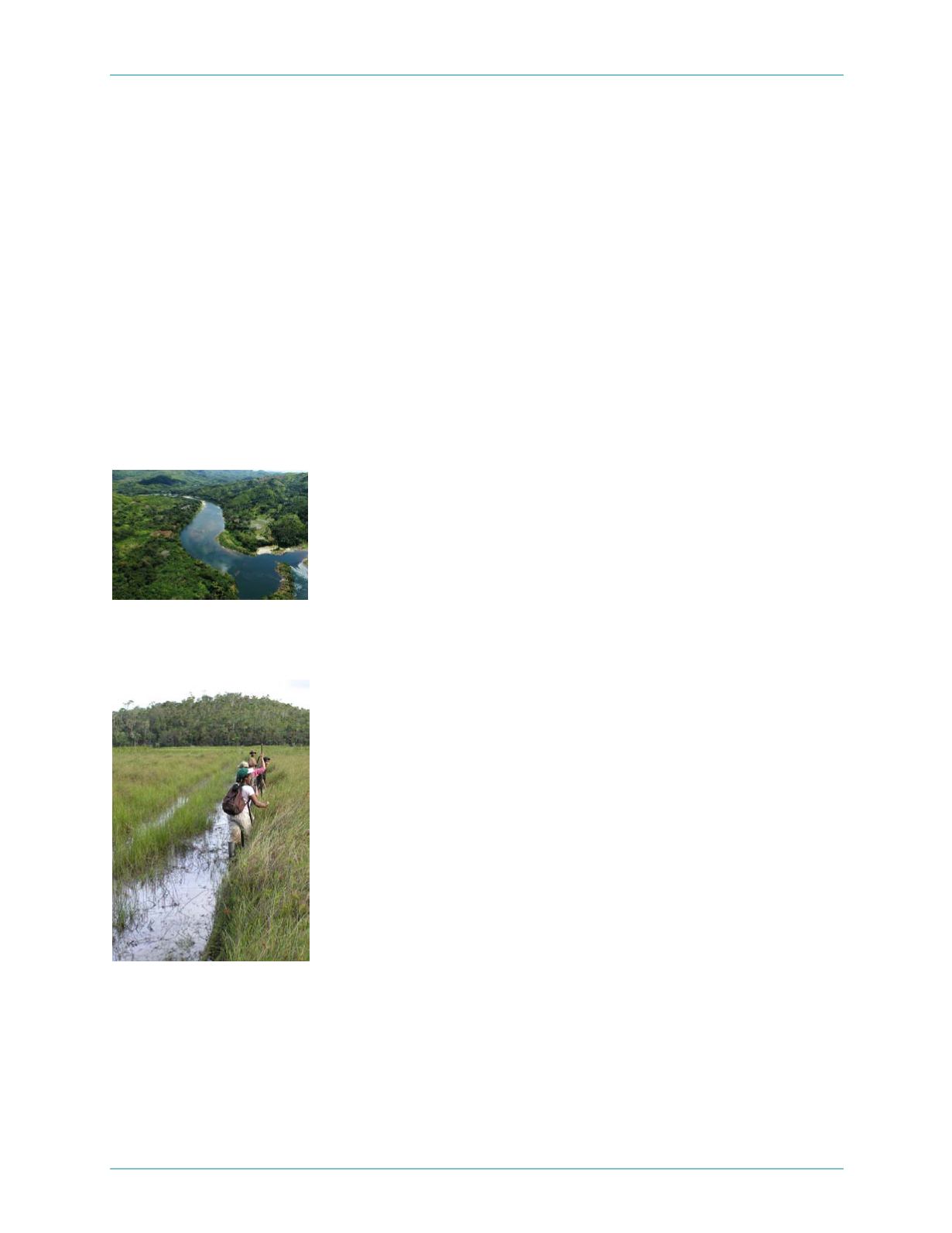
Summary
Field work resulted in an initial list of cultural sites near the pipeline
route. In all, 27 tombs, 19 symbolic tombs, two ceremonial sites, three
abandoned villages and one church were located within a 1 km wide
corridor.
Culture
Environmental Context
The slurry pipeline runs from the hills north of Moramanga, along the
north side of the Torotorofotsy Wetlands, through a series of watersheds
with steep valleys and granite outcrops and continues over rolling hills
until reaching the flat coastal dune area near the east coast. The route
assessed crosses about 100 watercourses, ranging from small streams
to large rivers. About 80% of the rainfall in the western portion of the
route occurs from November to March. Rainfall near Toamasina occurs
year-round and is double the amount received at the mine site.
Laterite soils along the pipeline route have developed on old terrain with
almost no vestige of the original rock structure. The routing of the
pipeline has been chosen to cross mainly disturbed areas, especially
through the Ankeniheny–Zahamena forest corridor. The dominant
vegetation type along the route is tavy (85%) which is largely disturbed,
composed of cleared forest and scattered shrubby vegetation or trees.
The second most common vegetation is degraded primary forest (4%)
comprised of either heavily logged forest or very small forest patches
that have been invaded with exotic species. Primary forest is the third
most dominant vegetation type (also near 4%) and occurs near the mine
site and within the Ankeniheny–Zahamena Corridor. This is zonal
tropical forest that may have been sparsely logged, but still contains
species that are characteristic of a pristine forest.
Pipeline stream crossing
location
Faunal survey team in
Torotorofotsy Wetlands
The number of fauna species surveyed was generally highest in the
primary forest with fewer species in the more disturbed areas closer to
the coast. Seventy-six species of reptiles and amphibians were
surveyed in primary forest. With the exception of one amphibian
species, all reptiles and amphibians were endemic to Madagascar, with
three species listed by the IUCN. Disturbed habitats, such as primary
forest fragments, secondary forest and tavy, had five or fewer reptile and
amphibian species. Most bird species were also detected in forested
habitat (62 of 86 species), including all eight IUCN-listed species. A total
of 26 fish species were recorded at pipeline stream crossing survey
sites. Eight species were endemic, 11 were native (indigenous but not
endemic) and seven were exotic. No fish species are listed by CITES.
Thus main areas to focus on with respect to potential impacts from the
pipeline on biodiversity are primary forest and stream crossings.
January 2006
Ambatovy Project — 19


